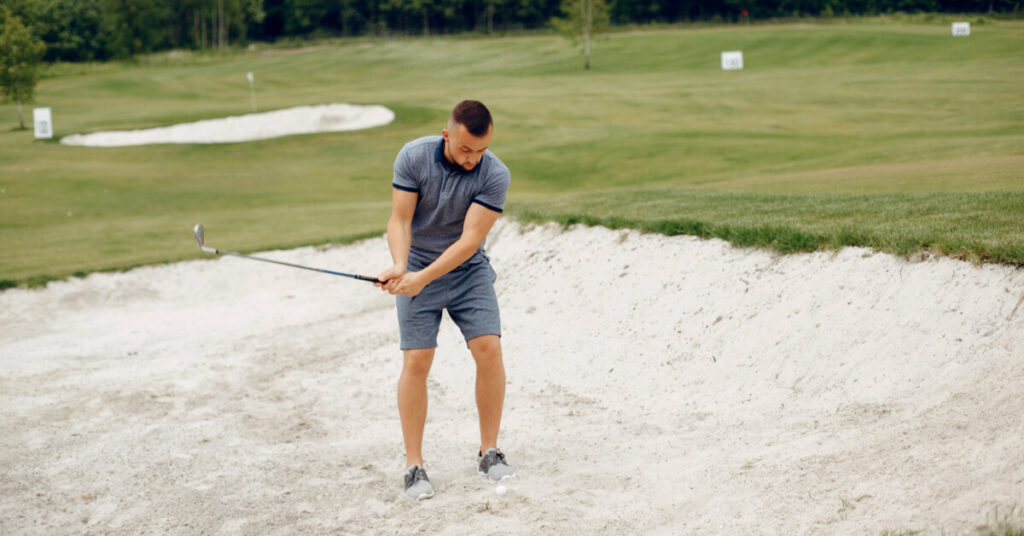Do I leave the flagstick IN or OUT?

Back in 2019, a new rule was introduced to the glorious game of golf that allows golfers to putt with the flagstick in. As with most new rules, this was a hotly contested topic among both professionals & amateurs alike.
But is it really such a big deal?
The change was made to help speed up play with officials saying it “wasn’t based on research but how the game is played”. In this blog I share some of the research and my own opinion of whether to remove the flagstick or not.
The Research: Via Golf Digest Technical Panel
Conducting rigorous testing using the golf teams at California Polytechnic State University, Tom Mase (Associate Chair of Mechanical Engineering, Cal Poly) analysed how a putted ball interacts with a flagstick. Using the Perfect Putter training aid and a combination of physics, engineering & statistics his research suggests that leaving the flagstick in hurts a putt’s chance of being holed much more often than it helps hole putts that otherwise would not have gone in.
Tom concluded that “Only in the rarest of cases is a flagstick going to “catch” a missing putt and drop it in the hole. Even the most highly skilled putter – given standard deviations – is going to hit the flagstick dead-centre only 27.6 percent of the time. For that remaining 72.4 percent, the golfer isn’t hitting the pin straight-on, and it’s always a disadvantage for making putts in these instances.”
The Data
For putts rolling 2½ feet by the hole, putts aimed to hit the flagstick dead-centre or off-centre went in the hole every time – with or without the flagstick in. For putts rolling 4½ feet by the hole and aimed to strike the flagstick off-centre, 90 percent of putts were holed without the flagstick in. Only 45 percent were made with the flagstick in.
Straight Putts
Flagstick in or not, all putts aimed for dead-centre went in, even at speeds rolling eight feet past the hole. At nine to 12 feet past, almost all putts missed without a flagstick in. Almost all were made with flagsticks in (fibreglass, tapered).
Three-Putt Factor
Keeping the flagstick in can help avoid three-putts. The flagstick kills much of the ball’s velocity on a putt hit too hard, even a glancing blow. That leaves a shorter second putt – assuming the putt hits that half-inch-wide flagstick.
The 99.9967% Solution
Based on probability and standard deviation calculations and PGA Tour statistics, the best tour players would strike the flagstick dead-centre from 20 to 25 feet about 3.3 percent of the time. If you assume the best pros would rarely roll their first putt nine feet past the hole – perhaps one in a thousand times – that would make leaving the flagstick in a benefit on only .0033 percent of all putts from 20 to 25 feet. And that’s for the best pros. For a typical amateur, those percentages are much worse.
Different Sticks, Same Effect
Putts rolling just off-centre and 4½ feet beyond the hole were tested with three flagsticks: fibreglass (the one played most often on the PGA Tour), tapered aluminium and multi-diamater aluminium. All measured approximately half an inch in diameter at green level. Fibreglass, the lightest, had the least negative results with 61 percent made, followed by multi-diameter (38 percent) and then tapered (36 percent). Each was worse than no flagstick (90 percent).
Visual Aid or Distraction?
Does leaving the flagstick in provide a visual benefit? Sports-vision experts believe it would, but a test of elite players was inconclusive. A group of 36 elite college golfers hit 25-foot putts at holes with the flagstick in and out. In both situations, the average putt finished about two feet from the hole. Another point to consider: because putting with the flagstick in is different, its presence could be physically and mentally distracting to your pre-putt routine.
Wind Advisory
In strong winds, the flagstick can bend, creating more space on one half of the hole and less on the other. In tests, that change opened up one side of the hole by an eighth of an inch – or the size of a golf-ball dimple. Seems inconsequential compared to just pulling out the flagstick, which opens up the entire hole.
So, to leave the flagstick IN or Out? The data argues against leaving it in but if it helps you, then by all means - go ahead. Personally I always take the flag out when putting on the greens because then you have more of the hole to roll the ball into.
As always, with golf, the right course of action is the one that works best for you. Practice with both and see what suits. Happy putting!


